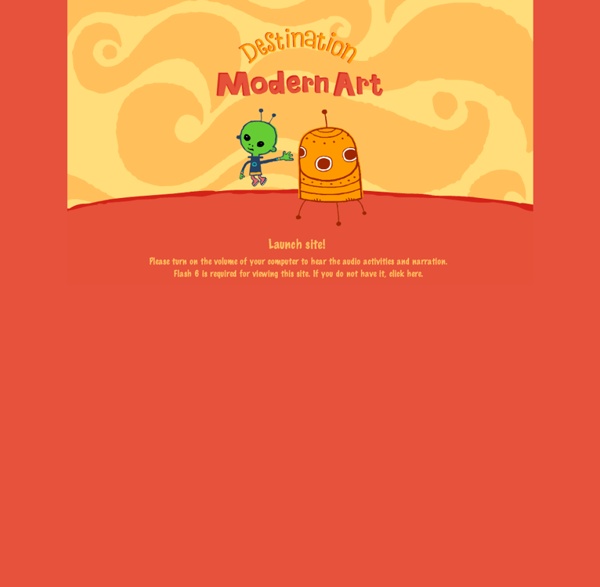



National Gallery of Art NGAkids Collage Machine If the Shockwave program above does not load, download and install the plug-in. Collage Machine is fun for children of all ages. This recently updated and enlarged version incorporates images from Collage Machine I and Collage Machine II. Click a menu picture and see what happens, or roll over the question mark and hold down the mouse button to learn how the program works. Use the AUTO button for ideas. For best results, run your PC or Macintosh web browser in 32-bit mode. Credits Copyright © 2016 National Gallery of Art, Washington
Incredible Art Department | Art Education The Art of Ed | Professional Development for Art Teachers How to edit video with a Chromebook Whoever said you couldn’t do things like video editing on a Chromebook. It’s true that we are limited to awesome programs like Adobe’s suite, but there are replacements that will give casual users a perfectly acceptable experience. Video editing is possible on a Chromebook, and I am about to show you how it can be done. My favorite video editing Chrome app is WeVideo. The app allows you to edit video in the cloud by allowing you to upload videos to their servers and working with them from there. The best part is you can also use your Google Drive as your storage. Let’s be reasonable, this is no professional video editing software. As you can see it works better than expected, for a Chrome OS device. Like everything in life, this web app is not completely free. It’s not the smoothest or best video editing experience, but WeVideo works.
Fastest Way to Create Comic Strips and Cartoons - Toondoo Phonto - Text on Image Deep Space Sparkle | Inspiring children one color at a time Art ArtFoodHistory The Wines of Gala: Salvador Dalí’s Surrealist Wine Guide Republished for the First Time in 40 Years Last published in 1978, The Wines of Gala is Salvador Dalí’s eccentric guide to wine grapes and their origin. Filled with over 140 appropriated artworks and collages collected and created by Dalí, the book is an equally surreal follow-up to TASCHEN’s reprinting of the artist’s cookbook Les Diners de Gala. In addition to Jean-François Millet’s The Angelus, which was a constant point of reference in Dali’s works, visuals include a Bacchus-like kitten, and a sort of tableau vivant featuring Dali himself. In keeping with Dalí’s efforts to create artwork based on his emotions, memories, and dreams, the artist chose to organize the wines in the book by how they influenced his mood. The 296-page wine bible published by TASCHEN is now available for pre-order. ArtIllustration Ethereal Acrylic Paintings by Duy Huynh Explore Cultural Displacement and Elements of Folklore ArtPhotography Art
Story Starters: Creative Writing Prompts for Kids If you’re looking to inspire your students’ writing and creativity, turn to these fun and exciting writing prompts. Perfect for overcoming writer’s block or even starting a brand-new short story in a different narrative, creative writing prompts can help students begin a new piece with confidence. Plus, these story starters can also encourage students to explore different genres while honing their writing skills. There are a lot of ways you can use writing prompts in your classroom. Reading a book in a genre, then having students use a story starter in that same genre. Take inspiration from classics like Treasure Island and newer popular series like The Bad Guys to explore how to write thrilling adventure stories. You’re part of a pirate crew in search of a long-lost storied treasure trove. Get students excited about adventure stories with these great books: If you’re looking to inspire your students’ writing and creativity, turn to these fun and exciting writing prompts.